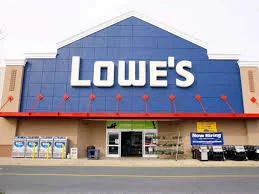In the ever-evolving landscape of home improvement retail, two giants stand tall: "Lowe’s" and "Home Depot". These two titans have long been in fierce competition, battling for dominance in the U.S. and international markets. A particularly interesting chapter in this rivalry is **Lowe’s acquisition strategy**—a critical tool it has wielded to close the gap with Home Depot. Although Lowe's has not acquired Home Depot, the comparison of Lowe’s acquisitions and how they position themselves against Home Depot makes for an insightful exploration.
Let’s dive deep into how Lowe's acquisition efforts have shaped its growth, their strategic importance, and how this affects the competitive landscape with Home Depot.
The Powerhouses: Lowe’s vs. Home Depot.
Before we delve into acquisitions, it's important to understand the scale and strategy of both companies:
**Home Depot**, founded in 1978, is the largest home improvement retailer in the United States. With over 2,300 stores and a revenue surpassing $150 billion annually, it dominates in both professional contractor services and DIY segments.
**Lowe’s**, established in 1946, operates over 1,700 stores and generates more than $90 billion in revenue. While smaller than Home Depot, it is a strong competitor and has made strategic acquisitions to grow its market share.
The differences in strategy, particularly in acquisitions, provide insights into each company’s vision and operational strengths.
Lowe’s Acquisition Strategy: A Strategic Growth Lever.
Over the past decade, Lowe’s has adopted a measured but impactful acquisition strategy to boost its capabilities and expand its footprint. Here are some of the most notable:
a. **RONA Inc. (2016)**
One of the most high-profile acquisitions by Lowe's was **RONA Inc.**, a Canadian home improvement retailer. The deal, valued at **$2.3 billion**, allowed Lowe’s to penetrate the Canadian market more deeply, giving it access to a well-established network and customer base.
**Strategic Value:**
- Expanded Lowe’s into Canada with strong local brand equity.
- Gained distribution centers and supply chain efficiencies in the region.
- Helped in competing with local Canadian players like Canadian Tire and Home Hardware.
b. **Maintenance Supply Headquarters (2017)**
Lowe’s acquired **Maintenance Supply Headquarters**, a distributor of MRO (maintenance, repair, and operations) products. This was part of Lowe’s strategy to grow in the **professional market segment**, an area where Home Depot historically had an edge.
**Strategic Value:**
- Strengthened Lowe’s ability to serve multifamily housing markets.
- Bolstered Lowe’s Pro Services, positioning it more strongly against Home Depot’s Pro ecosystem.
c. **Orchard Supply Hardware (2013 - Closed in 2018)**
Initially acquired from Sears Holdings, **Orchard Supply Hardware (OSH)** was Lowe’s attempt to explore a more urban, smaller-store format. However, Lowe’s decided to shutter all OSH stores in 2018 due to underperformance.
**Strategic Insight:**
- Demonstrates the challenges of integrating smaller, niche retailers into a big-box model.
- Showed Lowe’s willingness to cut losses and refocus on core operations.
d. **Boise Cascade’s Wood Products (2021)**
Although not a complete acquisition, Lowe’s announced deals to expand its wood product capacity through partnerships and procurement agreements, signaling an interest in vertical integration—much like Home Depot’s supply chain strategies.
Why Lowe’s Acquisitions Matter in the Battle with Home Depot.
Lowe’s acquisitions are not just about expansion—they are strategic moves aimed at **leveling the playing field with Home Depot**. Here's how:
a. **Enhancing Pro Customer Base**
Home Depot has traditionally led in the **Pro customer segment** (contractors, repair professionals). Lowe’s responded with acquisitions like Maintenance Supply HQ and investments in Lowe’s Pro Services to improve pricing, delivery, and product availability.
b. **Expanding International Reach**
The RONA deal gave Lowe’s a strong foothold in Canada, providing diversification beyond the U.S. market. Home Depot, on the other hand, pulled out of Canada in the past and focuses primarily on North America and select international locations.
c. **Supply Chain Modernization**
By acquiring distribution capabilities and streamlining logistics, Lowe’s is catching up with Home Depot’s superior supply chain infrastructure, a key factor in Home Depot’s long-standing lead.
d. **Omnichannel and E-commerce Growth**
While not acquisitions per se, Lowe’s has been investing heavily in digital transformation, partially inspired by Home Depot’s earlier digital success. Acquisitions in supply chain and tech vendors complement this effort.
Home Depot’s Strategy: Why It Still Leads.
While Lowe’s has made smart acquisitions, **Home Depot’s dominance stems from consistent investment in operational excellence**, tech infrastructure, and professional services.
Key factors that keep Home Depot ahead:
- Robust logistics and centralized distribution networks.
- Strong focus on the Pro customer with loyalty programs, credit solutions, and dedicated support.
- Aggressive investments in digital innovation and data analytics.
- Fewer but highly strategic acquisitions (e.g., Interline Brands in 2015 to strengthen MRO).
Looking Ahead: Can Lowe’s Catch Up?
Lowe’s under CEO Marvin Ellison has become far more disciplined and focused. The company has improved in-store operations, supply chain efficiency, and digital experiences. Its acquisition strategy has evolved from expansion for expansion’s sake to **targeted growth with a clear ROI**.
However, Lowe’s still lags behind Home Depot in:
- Total store count.
- Contractor loyalty and depth of Pro offerings.
- Overall brand strength in certain regions.
That said, **the gap is closing**. Smart acquisitions, a sharper strategy, and ongoing investment in digital and professional services may eventually lead to a more balanced market share.
Conclusion:
While **Lowe’s has not acquired Home Depot**, the story of its acquisitions is a narrative of competitive strategy and evolution. Each acquisition Lowe’s undertakes brings it one step closer to standing toe-to-toe with Home Depot, not just in size, but in capability and customer loyalty.
For businesses in the home improvement and construction ecosystem, this rivalry means **better services, broader options, and faster innovation**. Whether you're a contractor, supplier, or homeowner, keeping an eye on this strategic battle could provide both insights and opportunities.







.jpeg)


0 Comments